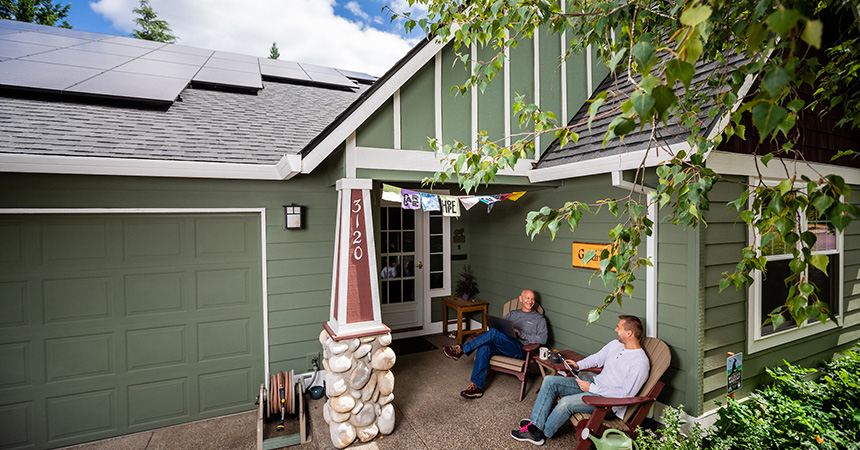
This is the first in a series of posts on energy resilience.
When the lights go out in your neighborhood, what happens in your home? In Oregon, where we face risks from storms, wildfires and earthquakes that could damage energy infrastructure, being able to recover quickly from power disruption is crucial.
Backup power for essentials like lighting, refrigeration, well pumps or charging cell phones and devices during power outages is an important part of making your home energy resilient.
The Oregon Department of Emergency Management advises everyone to be two weeks ready – prepared to be self-sufficient for two weeks in case of a major incident.
“Disasters can happen anywhere without warning, so it’s imperative Oregonians take active steps to prepare in advance,” Matt Garrett, the department’s interim director, said in a news release.
Adding battery storage to a solar system can help you get there.
The power of solar + storage systems
You might think installing solar panels on your roof automatically gives you power during an outage. While solar panels are fantastic for generating clean, renewable energy and for reducing electricity bills, residential solar systems are designed to shut off automatically during power outages to protect utility workers making repairs. Even homes with solar panels can experience power loss during an outage.
Adding battery storage to a solar system creates what’s known as a solar + storage system. Solar panels generate electricity during the day, and excess energy is stored in the battery system to be saved for when you need it. Energy not needed to power your home or charge your battery flows onto the electric grid; you receive a credit on your bill.
When the power goes out, the solar + storage system disconnects from the grid and works independently, continuing to power your home using stored energy and ongoing solar production.
Battery storage is a clean, safe and quiet backup power system, unlike a generator. Either mobile or hard-wired backup power generators depend on fossil fuels, but you could run out of fuel during a long outage. With a solar + storage system, the solar panels continue to generate clean, renewable energy to power your essential loads and charge the battery daily.
You decide what services are essential, like running medical equipment, powering cell phones or keeping medication refrigerated. The size of the solar + storage system, the essential equipment you choose to power, and how often you use your essential equipment determines how long you will have backup power during an outage
Benefits and incentives
Solar + storage can provide essential backup power that recharges daily, allowing you to weather small disruptions and major emergencies alike. In a widespread disaster, this could allow you to stay home and shelter in place, helping ease disaster recovery by letting first responders focus on those in most need.
Smart battery systems – those that interact with the electricity grid – also contribute to a more resilient energy system overall. During periods of high demand for electricity, your battery could feed stored energy back into the grid, helping to stabilize the system and prevent power outages.
Portland General Electric’s Smart Battery pilot program incentivizes customers to connect their home batteries to the grid, creating a collective virtual power plant that supports the grid during peak energy demand. Running through July 2025, this pilot program allows PGE to charge or discharge home batteries to either store or provide energy to the grid, typically during the hottest or coldest days (approximately 10-15 times per year). Customers retain full access to their batteries, ensuring they are always available during power outages or upon request.
Additionally, many Energy Trust trade allies offer special financing options. Homeowners can request a free analysis and bid from an Energy Trust solar trade ally.

